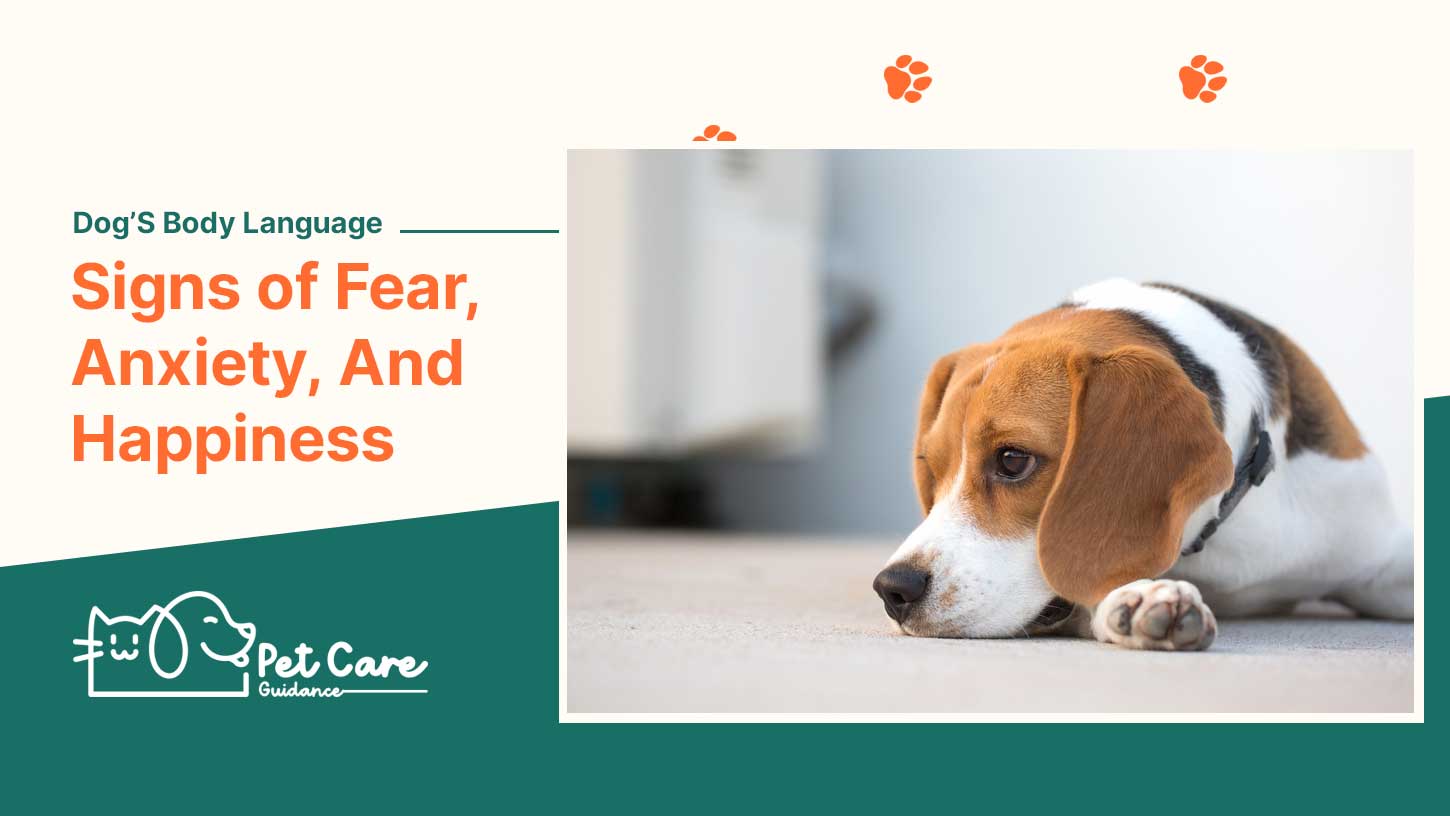Understanding your dog’s body language can help you identify signs of fear, anxiety, and happiness. Look for cues such as whale eye, tucked ears and tail, raised hackles, lip-licking, yawning, and panting to understand if your dog is stressed or anxious.
On the other hand, signs of a happy dog might include a slightly raised tail, relaxed body posture, and overall excitement. Paying attention to these nonverbal cues can provide valuable insights into your dog’s emotions and help you provide the necessary support and care.
Fear And Anxiety Differentiating Between The Two
One essential aspect of understanding your dog is interpreting their body language. Being able to recognize signs of fear, anxiety, and happiness can help you better understand your furry friend’s emotions and needs.
Fear and anxiety are two distinct emotions that dogs can experience, although they may appear similar. It’s important to differentiate between the two to address your dog’s specific needs effectively.
Fear vs Anxiety What’s the difference?
Fear is a response to a specific threat or danger, while anxiety is a generalized feeling of unease or apprehension. Fear is typically associated with a specific trigger, whereas anxiety is a prolonged state of worry and stress.
When a dog is fearful, they may exhibit behaviors such as avoidance, trembling, hiding, or aggression. On the other hand, symptoms of anxiety can include excessive panting, restlessness, repetitive behaviors, and hyper-alertness.
By understanding the difference between fear and anxiety, you can provide the appropriate support and care for your dog, helping them feel safe and secure.

Signs Of Fear And Anxiety In Dogs
| Signs of Fear and Anxiety in Dogs |
| Whale eye: Revealing the whites of their eyes |
| Tucked ears and tail |
| Raised hackles |
| Lip-licking and yawning |
| Avoiding eye contact or looking away |
When it comes to understanding your dog’s body language, it is important to recognize the signs of fear and anxiety. One common sign is “whale eye,” which is when dogs reveal the whites of their eyes. This can indicate that they are feeling stressed or threatened. Other signs include tucked ears and tail, raised hackles, lip-licking, yawning, and avoiding eye contact or looking away.
When a dog tucks their ears and tail, it signifies that they are feeling fearful or anxious. Raised hackles, the hair along the back of a dog’s neck and spine, is another indication of fear or aggression. Lip-licking and yawning are stress behaviors that dogs often display when they are uncomfortable or anxious.
Additionally, dogs may avoid eye contact or look away when they are feeling fearful or anxious. This can be a way for them to signal that they do not want to engage or are trying to diffuse a potentially stressful situation.
By being aware of these signs, you can better understand your dog’s emotions and provide them with the support they need to feel safe and secure.
Common Behaviors Associated With Fear And Anxiety
Panting:Panting is a common behavior associated with fear and anxiety in dogs. It’s a way for them to release stress and cool down. When dogs are anxious or afraid, they may pant heavily and rapidly. Excessive panting can be a sign of discomfort and should be taken seriously.
|
Flight Response:The flight response is a natural instinct for dogs when they feel threatened or scared. When faced with a stressful situation, dogs may try to escape or run away as a way to protect themselves. This behavior can manifest as running, hiding, or seeking a safe place.
|
Fleeing:Fleeing is another common behavior exhibited by dogs when they are fearful or anxious. This behavior involves actively running away or trying to avoid a perceived threat. It’s essential to understand the triggers that cause your dog to flee and work towards creating a safe and secure environment for them.
|
Sensory Overload:Dogs, like humans, can experience sensory overload when they are exposed to too much stimulation. This can cause them to become overwhelmed, and anxious, and exhibit various fear-related behaviors.
|

Recognizing Signs Of Happiness In Dogs
| Recognizing Signs of Happiness in Dogs | |
| Invitations to play | When dogs are happy, they often display invitations to play, such as rolling on grass or showing excitement to go out for a walk. These behaviors indicate their joy and eagerness to engage in activities. |
| Stops in the middle of play | Another sign of happiness in dogs is when they stop in the middle of play. This behavior shows that they are content and enjoying the moment. It allows them to take a break and catch their breath before continuing their playful interaction. |
| Hiding during play | Surprisingly, hiding during play can also be a sign of happiness in dogs. It may be their way of seeking attention or adding an element of surprise to the game. This behavior shows that they are comfortable and confident in their environment. |
Understanding An Unhappy Dog’s Body Language
|
When it comes to understanding your dog’s body language, it is important to recognize the signs of fear, anxiety, and happiness. One of the key indicators of an unhappy dog is the position of their tail and their level of agitation.
|
Identifying The First Signs Of Stress In Dogs
| Excessive panting |
| Tail between legs |
| Lip licking |
| Ears pinned back |
| Paw raises |
| Yawning |
| Pacing |
When it comes to understanding your dog’s body language, it’s important to know how to identify the first signs of stress in your furry friend. Excessive panting, tail between legs, lip licking, ears pinned back, paw raises, yawning, and pacing are common behaviors displayed by dogs when they’re feeling anxious or stressed.
These signs can indicate that your dog is experiencing fear or discomfort. By being aware of these signals, you can better understand your dog’s emotional state and take appropriate actions to help them feel more relaxed and comfortable.
Remember, every dog is different, so it’s important to pay attention to your individual pet’s body language and behavior to accurately gauge their emotional well-being.

Interpreting Dog’s Body Language Tail Position
Dogs use their tails as a form of communication, and the position of their tail can give us insight into their emotional state. When a dog’s tail is pointing down or tucked between their legs, it indicates fear and stress. This position is often seen when a dog feels threatened or anxious.
On the other hand, when a dog holds their tail up like a flag, it indicates confidence and may even be a sign of aggression. It’s important to note that each dog breed has a slightly different relaxed tail position, but a happy dog will generally raise it slightly.
However, if a dog seems tense or their body appears stiff, these are signs of discomfort and should be addressed. It’s crucial to pay attention to your dog’s body language and tail position to better understand their emotions and provide appropriate care.
Frequently Asked Questions On Understanding Your Dog’s Body Language: Signs Of Fear, Anxiety, And Happiness
What Is A Dog’s Body Language For Anxiety?
A dog’s body language for anxiety includes whale eye, tucked ears, tucked tail, raised hackles, lip-licking, yawning, and panting. They may avoid eye contact or look away.
What Is An Unhappy Dog’s Body Language?
An unhappy dog’s body language may include tucked ears, tail, raised hackles, whale eye, lip-licking, yawning, and panting.
How Do I Know If My Dog Is Happy Or Anxious?
To determine if your dog is happy or anxious, observe their body language. Signs of happiness include a relaxed tail position and a slightly raised tail. Signs of anxiety include whale eye, tucked ears, tucked tail, raised hackles, lip-licking, yawning, panting, avoiding eye contact, or looking away.
Look for these cues to understand your dog’s emotions.
What Are The First Signs Of Stress In A Dog?
The first signs of stress in a dog include excessive panting, tail between legs, lip licking, ears pinned back, paw raises, yawning, and pacing.
Conclusion
Understanding your dog’s body language is crucial for building a strong bond with your furry friend. By recognizing signs of fear, anxiety, and happiness, you can better understand their emotional state and provide the appropriate care and support. When your dog displays stress signals such as tucked ears, a tucked tail, raised hackles, lip-licking, or panting, it is important to address the source of their discomfort.
On the other hand, signs of happiness can include a relaxed body posture, a slightly raised tail, and a playful attitude. By paying close attention to your dog’s body language, you can ensure their well-being and create a harmonious environment for both of you.
Remember, each dog is unique, and understanding their individual cues will strengthen your bond and help you navigate their emotions more effectively. So, take the time to learn your dog’s language, and watch as your relationship flourishes.


